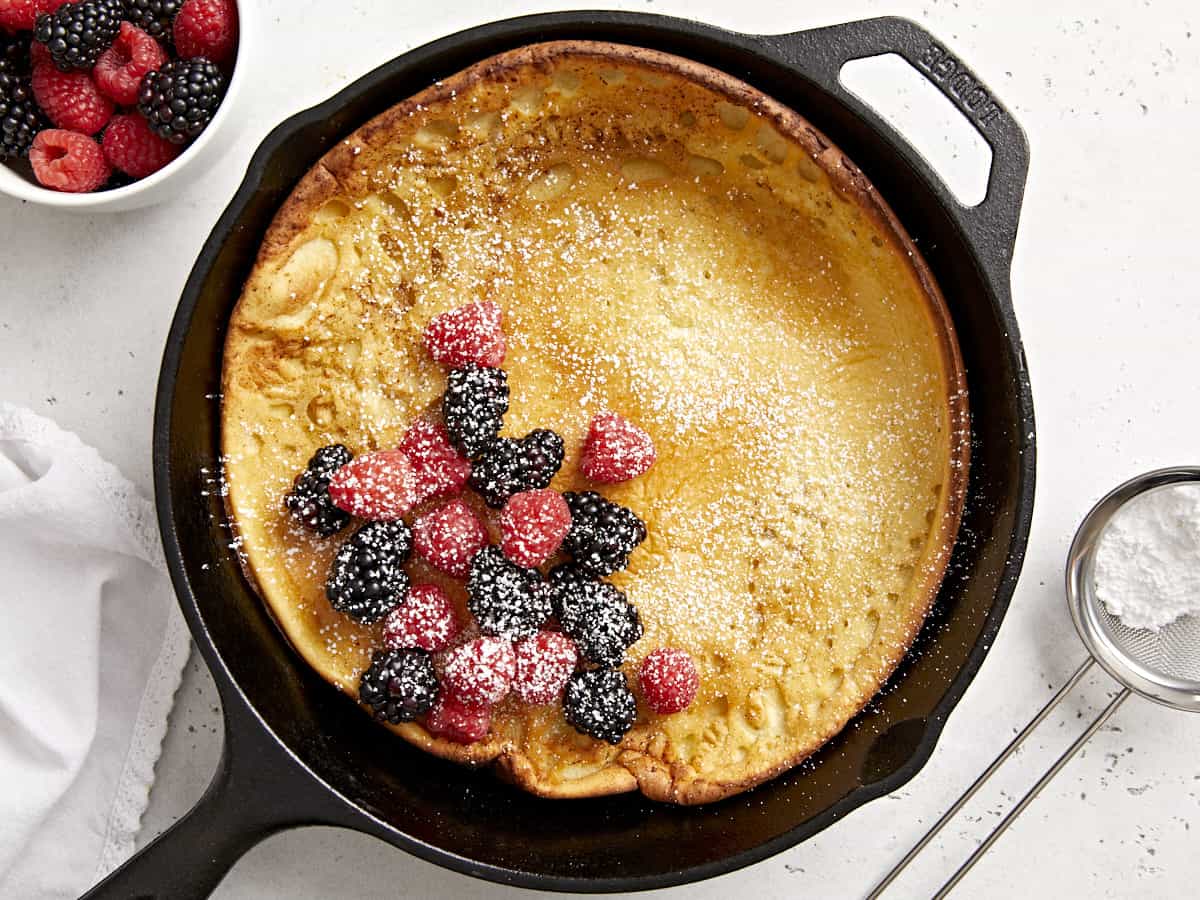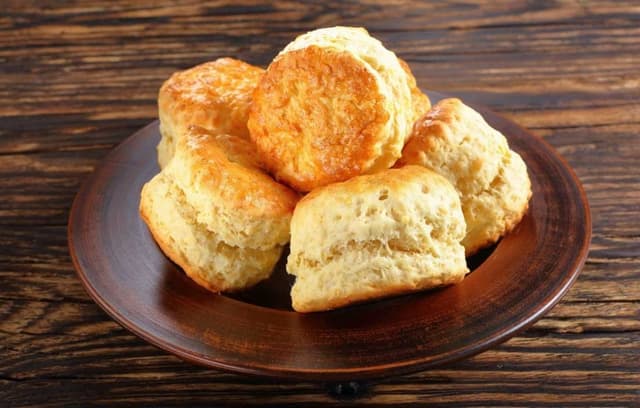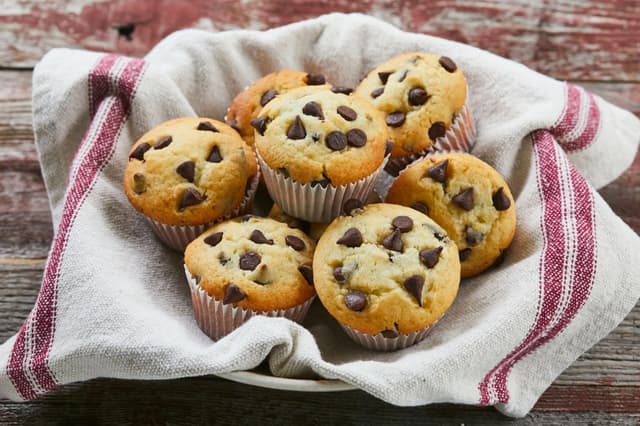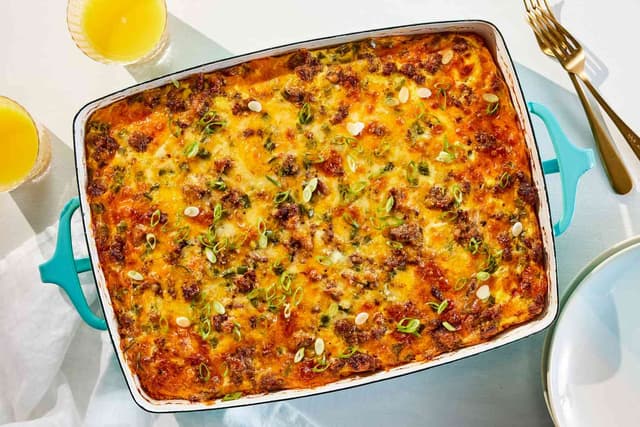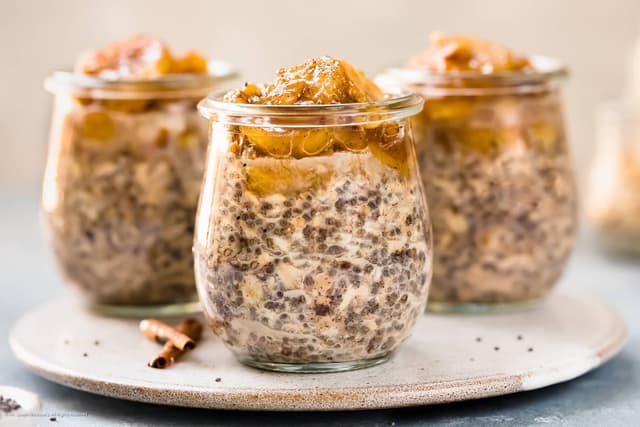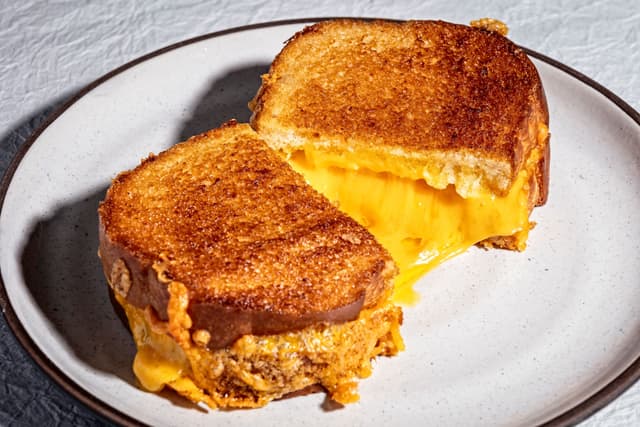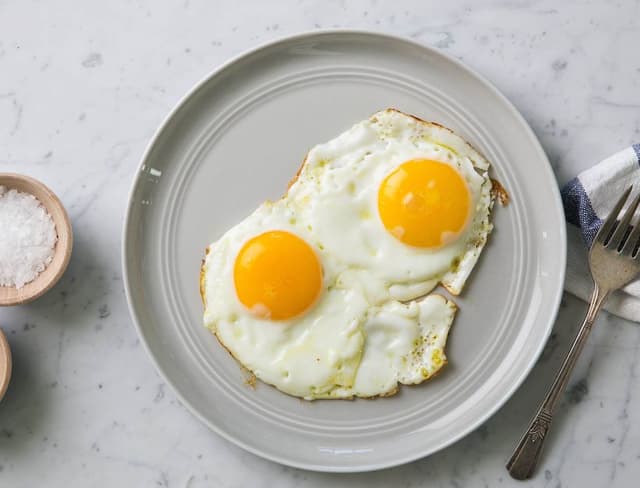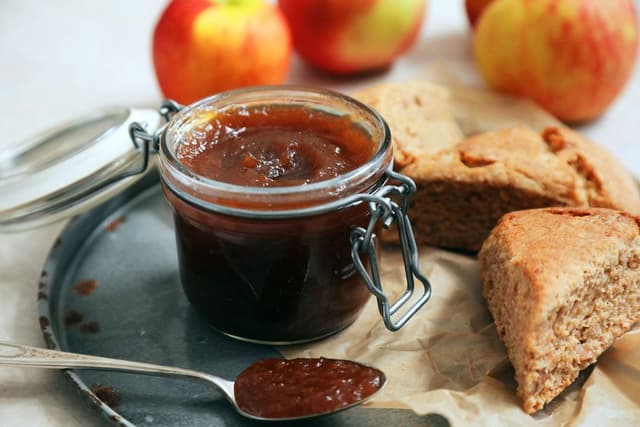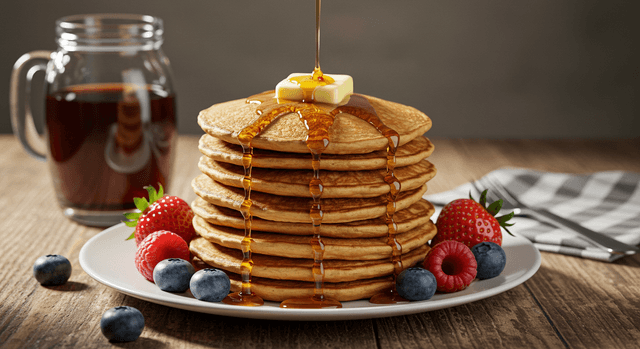Your Guide to Puffy Pancake Perfection!
Imagine a breakfast dish that arrives at the table like a golden, puffy cloud – part pancake, part popover, and entirely delicious. This is the magic of the Dutch baby, an oven-baked marvel that’s crispy on the edges, tenderly custardy within, and guaranteed to bring a sense of comfort and occasion to any morning.
It’s a dish that elicits "oohs" and "aahs" with its dramatic presentation, yet it’s surprisingly straightforward to create. For many, it carries a nostalgic charm, reminiscent of special family breakfasts, while for others, it’s an exciting new culinary adventure. Either way, it's a recipe that promises joy both in the making and the eating.
Why Make This Delicious Recipe & When to Serve It
Ever wondered what to make for a breakfast that feels a little special but doesn’t require hours in the kitchen? Meet the Dutch baby! Its irresistible charm lies in that dramatic oven puff, transforming simple ingredients into an edible masterpiece that’s a visual treat before it even hits your plate. Despite looking like a culinary feat, it's remarkably easy to whip up, making it a go-to for home cooks wanting to impress without the stress. This effortless elegance is a huge part of its appeal.
One of the best things about a Dutch baby is its versatility. It's the perfect canvas for a myriad of toppings, from a simple dusting of powdered sugar and a squeeze of lemon to a cascade of fresh berries and cream, or even savory options like a fried egg and herbs. This adaptability makes it a winner for pleasing different palates at the table.
So, when should this beauty grace your table? It’s a star for holiday breakfasts like Easter or Christmas morning, offering a stunning presentation that feels truly festive. For leisurely brunches with friends or family gatherings where you want to share something heartwarming, it’s a fantastic choice. And, of course, it’s perfect for those cozy weekend mornings when you crave something comforting and a little out of the ordinary. It can even be served for lunch, dessert, or "brinner" (breakfast for dinner)!
Ultimately, the Dutch baby is a must-try for home cooks because it delivers a high "wow" factor for relatively minimal effort. It’s a recipe that not only builds confidence in the kitchen but also teaches fundamental baking principles, like the incredible power of steam and heat, in a fun and utterly delicious way.

Basic Ingredients (Serves 6 people)
This recipe is designed to serve 6 people and uses simple, readily available ingredients. For the best, most dramatic puff, try to have your eggs and milk at room temperature!
- 6 large Eggs (at room temperature): These are the star players, providing essential structure and richness. Their proteins coagulate when heated, trapping steam and creating the lift needed for that magnificent, characteristic puff; room temperature eggs incorporate more easily into the batter and contribute to a higher rise.
- 1 cup All-Purpose Flour: This ingredient forms the structural backbone of the pancake. When combined with the milk and eggs, the gluten in the flour develops, creating a delicate network that holds the steam produced during baking, allowing the Dutch baby to expand beautifully and then set.
- 1 cup Whole Milk (at room temperature): Milk provides the necessary moisture to hydrate the flour, helping to create a smooth, pourable batter, and also contributes to the pancake's overall tenderness and moistness. The steam generated from the milk’s moisture is crucial for achieving that signature puff, and using room temperature milk helps maintain an optimal batter temperature for the best rise.
- 2 teaspoons Vanilla Extract: This aromatic extract adds a warm, comforting flavor that beautifully complements both sweet toppings and the subtle richness of the pancake itself, enhancing the overall sensory experience.
- Pinch of Sea Salt (approx. 1/4 teaspoon): More than just adding a salty taste, salt acts as a flavor enhancer, sharpening and balancing all the other notes in the pancake, particularly any sweetness from sugar or toppings, and the inherent richness of the eggs and butter.
- 4 tablespoons Salted Butter (plus more for serving, if desired): Melted in the piping hot skillet right before the batter is added, butter serves multiple purposes: it prevents the pancake from sticking, creates incredibly crispy, golden-brown edges, and imparts a rich, savory flavor that is absolutely characteristic of a perfect Dutch baby.

Step-by-Step Preparation
1. Preheat Oven and Skillet: Place a 12-inch cast iron skillet (a 10-inch skillet will also work, though the pancake may be slightly taller ) onto the center rack of your oven. Preheat the oven with the skillet inside to 425°F (220°C). This step is absolutely crucial, as a very hot skillet is essential for the Dutch baby to puff dramatically and achieve its signature texture. The intense heat from the preheated pan causes the batter to start cooking and setting almost instantly from the bottom, which helps create a firm base that effectively traps the upward-pushing steam generated during baking.
2. Prepare the Batter: While the oven and skillet are preheating, combine the 6 large room-temperature eggs, 1 cup of all-purpose flour, 1 cup of room-temperature whole milk, 2 teaspoons of vanilla extract, and the pinch of sea salt in a blender. Blend on high speed for 1-2 minutes, or until the batter is completely smooth and slightly frothy; this frothiness is a good indicator that air has been incorporated, which aids in the puffing. Some cooks prefer to rest the batter for 10-20 minutes after an initial mix, then whisk or blend again just before using; this allows the flour to fully hydrate and gluten to develop slightly, which can contribute to a better structure and air retention.
3. Melt Butter in Hot Skillet: Once the oven has reached 425°F (220°C) and has been at temperature for a few minutes (ensuring the skillet is thoroughly heated), carefully remove the hot skillet using sturdy oven mitts. Add the 4 tablespoons of salted butter to the skillet. You can either return the skillet to the hot oven for a minute or two for the butter to melt, or swirl the butter in the pan over medium heat on your stovetop until it's completely melted, foamy, and just beginning to turn a light golden color. Be vigilant during this step to ensure the butter melts and bubbles but does not burn, as burnt butter will impart an undesirable bitter taste to your pancake.
4. Pour Batter and Bake: Working quickly to retain as much heat in the skillet as possible, remove the skillet from the oven (or from the stovetop if you melted the butter there). Immediately pour the prepared batter directly into the center of the hot, melted butter. You should hear a satisfying sizzle as the batter hits the intensely hot pan. Without delay, return the skillet to the oven on the center rack. This speed is important because minimizing the time the skillet is out of the oven helps maintain its high temperature, which is vital for that initial burst of steam and the subsequent dramatic puff.
5. Bake to Puffy Perfection: Bake for 20-25 minutes. During this time, the Dutch baby will transform, puffing up impressively and turning deeply golden brown around the edges, while the center should become just set. It's very important to avoid opening the oven door during the first 15-20 minutes of baking, as a sudden drop in oven temperature can cause your rising Dutch baby to deflate prematurely. If you notice the edges are browning too quickly towards the end of the baking time, some chefs suggest lowering the oven temperature to around 300°F (150°C) for the last 5 minutes to allow the center to cook through fully without the edges burning.
6. Serve Immediately: Once it’s gloriously puffed and golden, carefully remove the Dutch baby from the oven. Be prepared for it to begin to deflate soon after it leaves the heat – this is perfectly normal and part of its charm! For the best experience, cut it into wedges and serve immediately with your favorite toppings.

Tips for the Perfect Recipe
Room Temperature is Key:
- Eggs and Milk: Always, always use room-temperature eggs and milk. Cold ingredients can significantly lower the batter's temperature and cool down the hot pan too much, hindering the rapid steam production needed for that impressive puff.
Hot, Hot, Hot Skillet:
- Preheat Thoroughly: Ensure your cast iron skillet is screaming hot. This means preheating it in the oven for at least 10-15 minutes after the oven itself has reached the target temperature. This intense, direct heat is what creates the immediate sizzle and steam crucial for lift.
Batter Consistency:
- Smooth is Good, Lumps are Okay (Sometimes): A blender is great for achieving a very smooth batter. However, don't over-process it. If you're whisking by hand, some tiny lumps are generally fine; in fact, some believe these little imperfections can help trap air, contributing to a fluffier result. The primary goals are adequate aeration and allowing the flour to hydrate properly, which can be aided by a short rest after initial mixing.
Don't Peek (Too Early):
- Resist Opening the Oven: It can be tempting, but avoid opening the oven door for at least the first 15-20 minutes of baking. A sudden drop in temperature is a common culprit for a Dutch baby that collapses before it's fully set.
Pan Choice:
- Cast Iron for the Win: A 10 or 12-inch cast iron skillet is the gold standard for Dutch babies due to its excellent heat retention and even cooking capabilities. If you use a different oven-safe pan, such as a ceramic baking dish , your results might vary slightly in terms of the height of the puff and the crispiness of the edges.

Serving Ideas
The beauty of a Dutch baby is its adaptability. Here are some ideas to get you started:
Classic & Simple:
- Lemon and Powdered Sugar: This is the quintessential way to serve it. A generous squeeze of fresh lemon juice over the warm pancake, followed by a heavy dusting of powdered sugar, creates a perfect balance of tart and sweet.
- Butter and Maple Syrup: You can't go wrong with a drizzle of good quality maple syrup and an extra pat of butter melting into the warm, custardy interior.

Fruity Delights:
- Fresh Berries & Whipped Cream: A vibrant pile of fresh strawberries, blueberries, and raspberries, accompanied by a dollop of lightly sweetened whipped cream, makes for a stunning and delicious topping.
- Sautéed Apples or Pears: Warm, tender apples or pears sautéed with cinnamon and a touch of butter or brown sugar are magical, especially in the cooler months. A sprinkle of toasted pecans adds a lovely crunch.
- Jam or Fruit Preserves: Your favorite jam or fruit preserves – think apricot, raspberry, or blueberry – will melt beautifully over the warm pancake.

Decadent Twists:
- Nutella and Bananas: For a truly indulgent treat, spread a luscious layer of Nutella, top with sliced bananas, and perhaps a sprinkle of chopped walnuts or pecans.
- Boysenberry Ice Cream & Peaches: Transform your Dutch baby into an impressive dessert by topping it with sliced fresh peaches, a handful of blackberries, and a generous scoop of boysenberry ice cream.

Savory Sensations:
- Fried Egg & Cheese: Don't limit yourself to sweet! Top your Dutch baby with a perfectly fried egg, some shredded cheese (cheddar or Gruyère work well), and a scattering of fresh herbs like chives or parsley.
- Smoked Salmon & Cream Cheese: Elevate your brunch with smoked salmon, dollops of dill-infused cream cheese, thin slices of red onion, and a sprinkle of capers.
- Caramelized Onions & Goat Cheese: For a sophisticated savory option, try rich, sweet caramelized onions and tangy crumbled goat cheese, perhaps with some roasted cherry tomatoes or asparagus.

Dutch Baby Troubleshooting Guide
Even with the best intentions, things can sometimes go awry. Here’s a quick guide to common Dutch baby dilemmas:
| Issue | Potential Cause(s) | Solution(s) |
|---|---|---|
| Flat / Didn't Puff | Oven/skillet not hot enough; Cold ingredients (eggs, milk); Opened oven too early. | Ensure oven & skillet are fully preheated (425°F/220°C); Use room temp ingredients; Don't open oven for first 15-20 mins. |
| Tough Texture | Overmixed batter (too much gluten development). | Mix batter until just combined; Consider resting batter, then gently whisk/blend before use. |
| Soggy Bottom/Edges | Skillet not hot enough when batter added; Too much butter pooling unevenly. | Ensure skillet is very hot & butter is sizzling; Swirl butter to coat evenly before adding batter. |
| Burned Edges, Raw Center | Oven too hot or pancake too close to heating element; Uneven oven heating. | Lower oven temp for last 5-10 mins if browning too fast ; Ensure middle rack placement; Check oven accuracy. |
| Deflated Too Quickly | This is normal! The structure relies on steam, which condenses upon cooling. | Serve immediately. To minimize some deflation, cool in pan on wire rack for 1 min, then transfer to rack. |
Tips for Storing and Reheating
While a Dutch baby is undeniably best enjoyed fresh from the oven, leftovers can still be tasty if handled correctly.
Storing Leftovers:
- Cool Completely: Before storing, allow the Dutch baby to cool down fully to room temperature. This helps prevent condensation from making it soggy.
- Airtight Container: Store any leftover pancake in an airtight container or on a plate tightly covered with plastic wrap in the refrigerator.
- Duration: It will keep reasonably well for up to 3 days in the refrigerator.
- Separate Toppings: If your Dutch baby was served with toppings like fresh berries or whipped cream, it's best to store these separately to maintain the best texture for both the pancake and the accompaniments.
Reheating Tips:
- Oven for Best Texture: To revive some of its pleasant texture (though not the original puff), the oven is your best bet. Reheat slices on a baking sheet in a preheated oven at 300-350°F (150-175°C) until warmed through, which usually takes about 3-5 minutes.
- Microwave for Quickness: For a speedier option, you can reheat individual slices in the microwave for about 30 seconds to 1 minute. Be aware, however, that this method tends to make the pancake softer and less crispy than oven reheating.
- Not Suitable for Freezing: It's generally agreed that Dutch babies do not freeze well. Their delicate, airy structure suffers significantly upon thawing, often resulting in a disappointingly dense or soggy texture.
Conclusion
The Dutch baby, with its magnificent, fleeting puff and delightful taste, is more than just a pancake; it's an experience. Deceptively simple to make yet impressively grand in its presentation, it’s a recipe that promises to bring joy, a touch of culinary magic, and plenty of smiles to your table. So go ahead, gather your ingredients, and give this wonderful creation a try!
Frequently Asked Questions
Q: What makes a Dutch baby pancake puff up so dramatically?
A: A Dutch baby achieves its impressive puff thanks to steam. The liquid ingredients (milk and eggs) in the batter turn into steam in the very hot oven and skillet, and the egg proteins create a structure that traps this steam, causing the pancake to expand rapidly, much like a popover or Yorkshire pudding.
Q: Why did my Dutch baby not puff up or come out flat?
A: The most common reasons for a flat Dutch baby are an oven or skillet that wasn't hot enough, or using cold ingredients like eggs and milk which inhibit rapid steam production. Ensure your oven and skillet are thoroughly preheated to 425°F (220°C) and that your key liquid ingredients are at room temperature for the best lift.
Q: Can I make a Dutch baby in a pan other than cast iron?
A: While a cast iron skillet is ideal due to its superior heat retention and distribution, you can use other oven-safe skillets or baking dishes (like a 9x13 inch oval or rectangular glass or ceramic dish ). However, the height of the puff and the crispiness of the edges might vary slightly compared to one baked in cast iron.
Q: Where does the name "Dutch baby" come from?
A: The name "Dutch baby" is believed to have originated in the early 1900s at Manca's Cafe, a family-run restaurant in Seattle, Washington. It's thought to be an Americanized mispronunciation of "Deutsch," the German word for German, as the pancake itself is derived from German Pfannkuchen.
Works cited
- Dutch baby pancake - Wikipedia, accessed May 16, 2025, https://en.wikipedia.org/wiki/Dutch_baby_pancake
- Dutch Baby Pancake | Baker Bettie, accessed May 16, 2025, https://bakerbettie.com/dutch-baby-pancake/
- Dutch Baby Pancake | The Modern Proper, accessed May 16, 2025, https://themodernproper.com/dutch-baby-pancake
- Dutch Baby Pancake with Honey-Lemon Strawberries, Blueberries, and Pecans, accessed May 16, 2025, https://juliasalbum.com/dutch-baby-pancake-berries/
- Dutch Baby Pancake Made With Fresh Milled Flour - Grains In Small ..., accessed May 16, 2025, https://grainsinsmallplaces.net/dutch-baby-pancake-made-with-fresh-milled-flour/
- Dutch Baby Recipe - Serious Eats, accessed May 16, 2025, https://www.seriouseats.com/dutch-baby-pancake-recipe
- My Best Dutch Baby Pancake Recipe » Hummingbird High, accessed May 16, 2025, https://www.hummingbirdhigh.com/2022/03/my-best-dutch-baby-pancake-recipe.html
- Why Didn't Dutch Baby Didn't Puff | The Kitchn, accessed May 16, 2025, https://www.thekitchn.com/why-dutch-baby-didnt-rise-22994417
- Dutch Baby using New York Times Recipe : r/Baking - Reddit, accessed May 16, 2025, https://www.reddit.com/r/Baking/comments/hrtz2j/dutch_baby_using_new_york_times_recipe/
- Dutch Baby Pancake – My Nutrition Creative, accessed May 16, 2025, https://mynutritioncreative.com/dutch-baby-pancake/
- Chef John's Dutch Babies Recipe - Allrecipes, accessed May 16, 2025, https://www.allrecipes.com/recipe/239993/chef-johns-dutch-babies/
- Recipe: Savory Tex-Mex Dutch Baby Pancake | The Kitchn, accessed May 16, 2025, https://www.thekitchn.com/recipe-savory-tex-mex-dutch-baby-pancake-230121
- Homemade Dutch Baby Recipe - Chef Billy Parisi, accessed May 16, 2025, https://www.billyparisi.com/dutch-baby-pancake-recipe/
- www.tasteofhome.com, accessed May 16, 2025, https://www.tasteofhome.com/article/what-is-a-dutch-baby-pancake/#:~:text=As%20the%20legend%20goes%2C%20the,and%20the%20rest%20was%20history.
